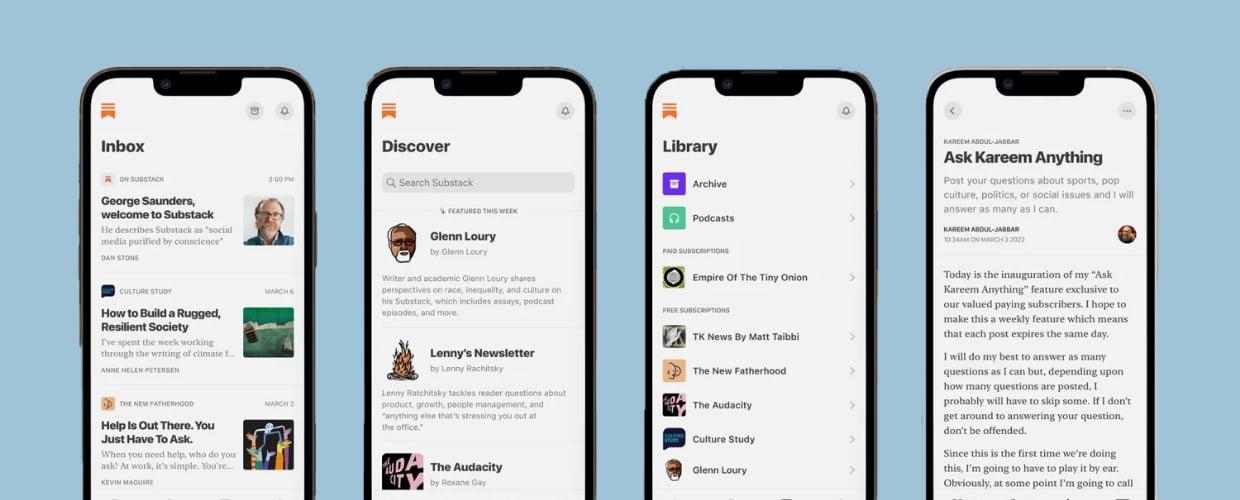Generate more impact through targeted media outlets
These days, it feels like we’re all swiping and scrolling our days away. With screen time going up significantly in the last five years, Americans are now averaging more than five hours a day of TV and video content alone. Given this upward trajectory, increased ad fatigue and shortened attention spans pose new challenges for brands looking to cut through the noise.
The sheer number of messages we receive in a single day is overwhelming. We can’t possibly process and register them all, so our brains ignore most of these messages. For PR professionals facing this reality, the question then becomes: as we work to make the most of our communications strategies, are we helping or adding to the clutter?
As brands look to move the needle and increase brand awareness, it’s important to think strategically about your audience and how they consume information. You must share the right messages with the right people through the proper channels to achieve business success and showcase how your PR strategies are making an impact.
There’s a common misconception that prominent national media outlets, such as The Wall Street Journal, Forbes, CNN, or The New York Times, are essential for driving brand awareness. While that certainly can be true, don’t overlook the lesser-known and often more targeted media outlets that hold a significant influence over your audience. With the right message and strategy, these outlets can actually make a much greater impact for your brand.
Three reasons to include focused media outlets in your plan
When we reference media that aren't prominent national outlets, we're essentially talking about industry trade media, regional news outlets and local media, bloggers, podcasts, social influencers, and others.
What these outlets lack in reach (compared to national media), they make up for with more informed and focused readerships. Coverage in a trade publication or local blog might not come with the same glitz and glamor of a feature story in a national news outlet, for example, but it's much more likely that you're reaching the right audience.
Here are three more reasons why getting more thoughtful about your outreach strategy can improve your media relations performance and maximize your efforts.
- The deeper, more technical story is ripe for picking.
Audiences of focused media outlets – especially industry trades – have a foundational understanding of niche topics, allowing spokespeople, content writers, and other experts to spend time getting deeper into the subject.
A strategic perspective from the executive team is great for providing high-level context for your business vision. Still, there’s something to be said about providing deeper insights into the more technical side of operations, which can help build awareness for specific business areas and reinforce your domain authority and expertise. In fact, Muck Rack’s State of Journalism 2023 found that only 62% of journalists surveyed found CEOs to be credible sources – down 12% from 2021.
Tapping into your bench of internal subject matter experts (SMEs) to “talk shop” with engaged media can foster healthy media relationships and bolster brand credibility. In this case, we move from why the topic is important for broader audiences to how this information impacts specific audiences across the industry. It’s crucial to share compelling numbers, new data connections, big-name partnerships, and cutting-edge technologies – all of which can attract interest from prominent national media outlets. But it’s just as essential to give the details under the surface, such as customer perspectives for validation, technical aspects speaking to innovation, and process details that help push the industry forward.
Our client, EOS, a global leader in additive manufacturing (AM), is an excellent example of the effectiveness of trade media outreach. EOS challenged Airfoil to demystify the concept of AM and build brand awareness. Our integrated marketing approach leveraged multiple channels like messaging development, media relations, content development, design, podcasting, and more to shift perception of AM's capabilities. From a PR perspective, we created a robust spokesperson matrix that detailed the different topics our SMEs could speak to. Our two-track approach captured high-level manufacturing topics, which led to coverage in prominent national outlets like The New York Times, but primarily focused on in-depth technical topics informed by domain experts, leading to coverage in industry trade outlets like Today’s Medical Developments, 3DPrint.com, SME Magazine and more. Through these efforts, we secured more than 200 high-impact media placements for the brand and forged lasting relationships with highly influential media.
- Subject matter experts (SMEs) shine brighter.
Your organization is made up of people who specialize in different areas of the business, and they have the knowledge and proof to bring your key messages to life. Foundational knowledge only goes so far. Opening the door for your internal experts to educate and inform audiences helps to demonstrate key differentiators in your business, build trust, and cultivate meaningful relationships.
We work with our clients – like EOS – to create a spokesperson matrix with assigned subjects for all internal SMEs to drive media relations efforts and maximize storytelling. With a little messaging development and media training, your brightest team members can build thought leadership and add depth to your key focus areas – tying business success to communications efforts.
- Brands can build stronger positions to stand out within the market.
Trade and industry media outlets are more likely to accept outside editorial submissions on topics developed for niche audiences as opposed to prominent national outlets.
Not only does this give you the chance to leverage your SMEs, expertise, and customer successes and testimonials to control the narrative and tell your best stories, it also helps build trust among key audiences by associating with leading outlets. Third-party recognition strengthens your credibility and unique market position for your brand and experts. Think of these targeted media outlets as news sources for influencers in your market. The more relationships, interviews, and editorial space you can garner, the further your messages will soar.
Why do media tiers matter?
A positive feature story in The New York Times for any brand is typically a HUGE win. However, your messaging will often carry more impact if you can strike the delicate balance of reaching the right people with the right story at the right time – and that’s not always going to be through a widely recognized national media outlet.
Building messaging strategies for specific media types will help you tailor your stories to the right audiences. The idea is to develop a media list that reaches key players who have the power to move your business KPIs.
Need help navigating your media relations needs and activities? Airfoil has helped clients build media relations strategies and programs for more than 20 years. Connect with us today and learn how we can build an effective program that is right for your business.





